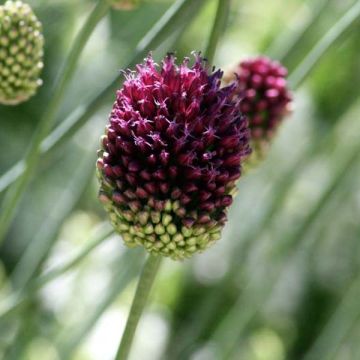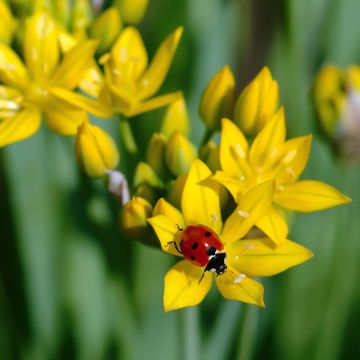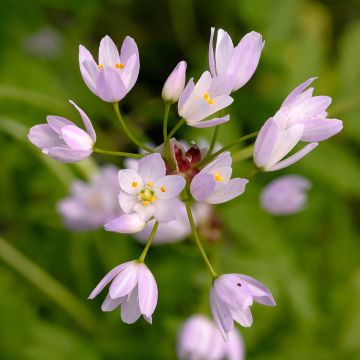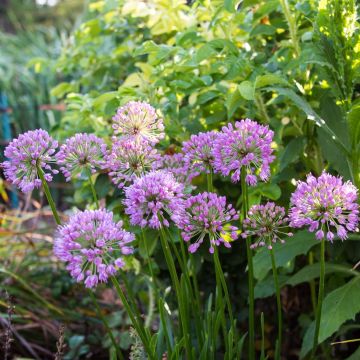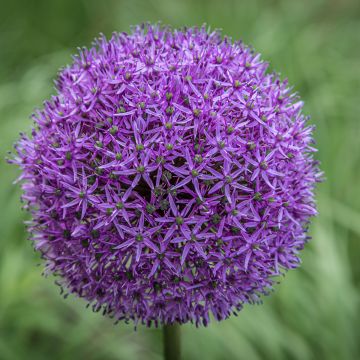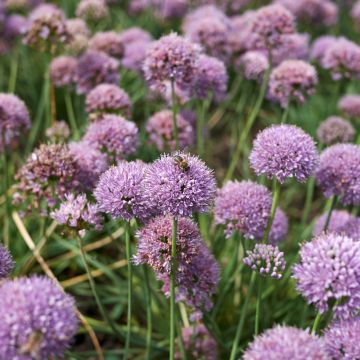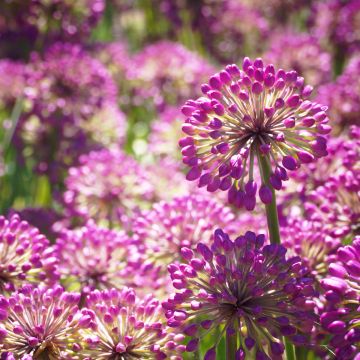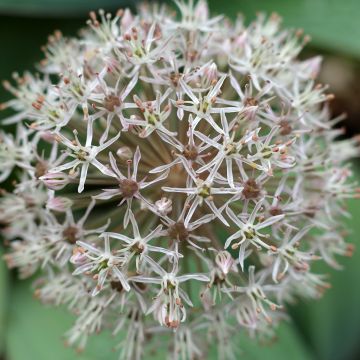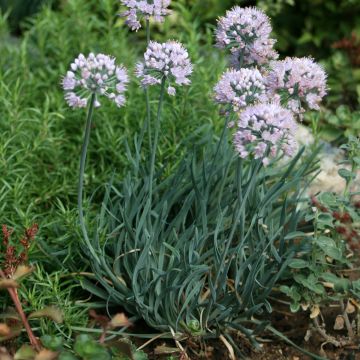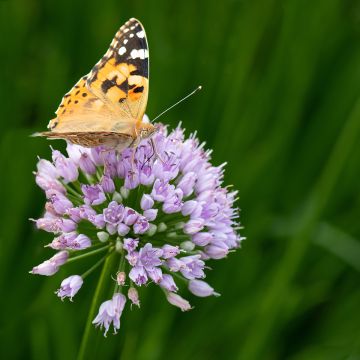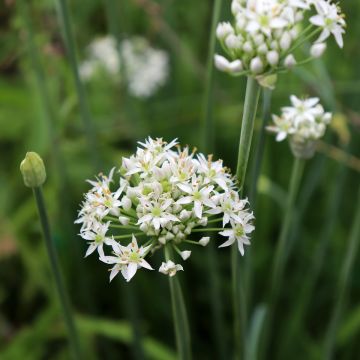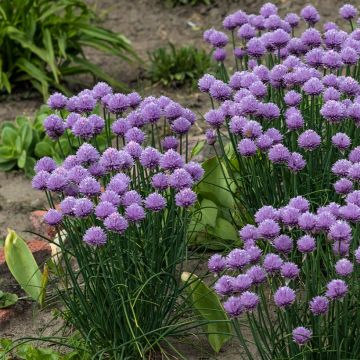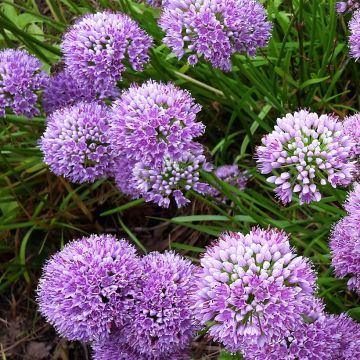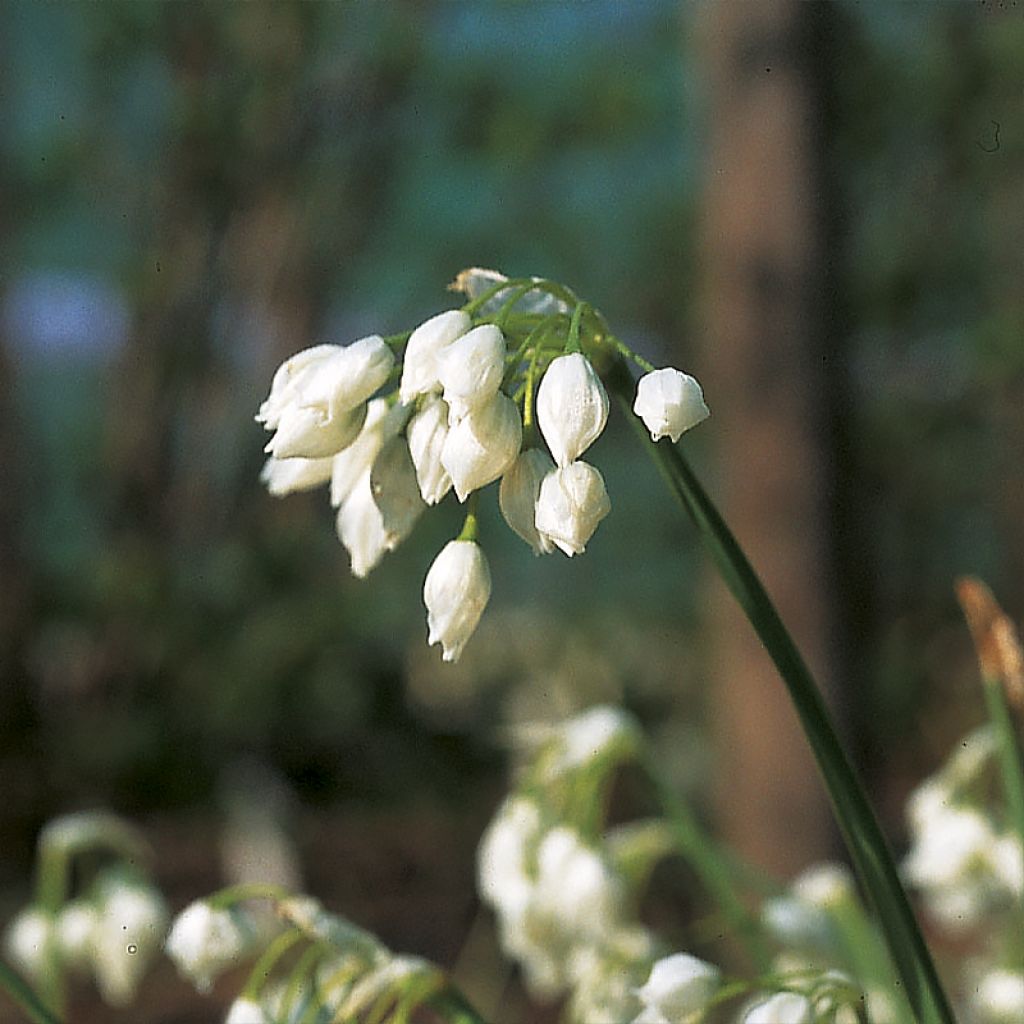

Ail paradoxal - Allium paradoxum var. normale
Allium paradoxum var. normale
Allium paradoxum var. normale
Few-flowered garlic, Few-flowered leek, Ornamental Onion
Special offer!
Receive a €20 voucher for any order over €90 (excluding delivery costs, credit notes, and plastic-free options)!
1- Add your favorite plants to your cart.
2- Once you have reached €90, confirm your order (you can even choose the delivery date!).
3- As soon as your order is shipped, you will receive an email containing your voucher code, valid for 3 months (90 days).
Your voucher is unique and can only be used once, for any order with a minimum value of €20, excluding delivery costs.
Can be combined with other current offers, non-divisible and non-refundable.
Why not try an alternative variety in stock?
View all →This plant carries a 6 months recovery warranty
More information
We guarantee the quality of our plants for a full growing cycle, and will replace at our expense any plant that fails to recover under normal climatic and planting conditions.
Would this plant suit my garden?
Set up your Plantfit profile →
Description
Allium paradoxum var. normale is a beautiful bulbous plant, much less known and cultivated than its cousin A. paradoxum, which is classified as invasive in England. This rare subspecies is characterised by a charming spring flowering of small trailing white clusters, as well as fragrant and deliciously aromatic foliage. It prefers well-drained soil and can tolerate dry summers but dreads harsh winters. Very loyal if conditions are met, this ornamental and edible garlic will naturalise in the garden and come back every year.
Allium paradoxum var. normale belongs, like all ornamental garlic, to the Amaryllidaceae family. Originally from Iran, it is the non-bulbiferous form of a normally bulbiferous adventive species called A. paradoxum var. paradoxum. It is an herbaceous perennial plant with a small bulb measuring 1cm in diameter. The foliage emerges from the ground as early as November. It theoretically persists throughout winter, but will be damaged by heavy frost, so the cultivation of this plant is reserved for regions with mild winters. The foliage consists of long, bright green leaves with a prominent central vein. The leaves curl, hiding the floral buds that emerge in March-April. The flowering takes place in April-May, at 25 to 30cm (10 to 12in) above the ground. If they are not affected by frost, the small, pure white pendulous bell-shaped flowers bloom in small umbels. They are delightful but scentless. This "normal" form produces seeds that are dispersed by ants and germinate easily. The foliage dries up in early summer, while the bulb goes into dormancy. At this time of year, the soil should be rather dry.
Use this unique species by grouping the bulbs in a border protected from cold and wind, or in a pot. Allium paradoxum var. normale will particularly thrive at the base of shrubs and under deciduous trees with light foliage. For example, put it with fairly dry semi-shade plants such as liriopes, lily of the valley, periwinkle, liverworts, and blanda anemones. It can also accompany bear garlic, both in the garden and on the plate. This garlic is considered a useful plant in the fight against peach leaf curl and rose black spot. Finally, all garlics are edible, in all their parts, and this one is no exception.
Report an error about the product description
Plant habit
Flowering
Foliage
Botanical data
Allium
paradoxum var. normale
Amaryllidaceae - Alliaceae
Few-flowered garlic, Few-flowered leek, Ornamental Onion
West Asia
Other Allium
View all →Planting and care
Allium paradoxum var. normale is ideally planted during its dormant period, no later than September, in well-drained, light soil with a tendency towards limestone. Place the bulbs in non-burning sunlight or partial shade, spaced 20cm (8in) apart and at a depth of 10 to 12cm (4 to 5in). For a beautiful mass effect, group the bulbs in sets of 7. Let them naturalise, without moving them. This plant fears excessive moisture, both in winter and summer. Its foliage fears heavy frosts and its flowering can be destroyed by late spring frosts. Therefore, growing it in open ground will be more rewarding in milder regions, choosing a location sheltered from wind and heavy frosts. Water in spring if it is dry. On the other hand, no watering is needed in summer.
Growing in a pot is possible in good, soft and well-drained soil, which allows the plant to be protected in winter in very cold regions.
Planting period
Intended location
Care
This item has not been reviewed yet - be the first to leave a review about it.
Haven't found what you were looking for?
Hardiness is the lowest winter temperature a plant can endure without suffering serious damage or even dying. However, hardiness is affected by location (a sheltered area, such as a patio), protection (winter cover) and soil type (hardiness is improved by well-drained soil).

Photo Sharing Terms & Conditions
In order to encourage gardeners to interact and share their experiences, Promesse de fleurs offers various media enabling content to be uploaded onto its Site - in particular via the ‘Photo sharing’ module.
The User agrees to refrain from:
- Posting any content that is illegal, prejudicial, insulting, racist, inciteful to hatred, revisionist, contrary to public decency, that infringes on privacy or on the privacy rights of third parties, in particular the publicity rights of persons and goods, intellectual property rights, or the right to privacy.
- Submitting content on behalf of a third party;
- Impersonate the identity of a third party and/or publish any personal information about a third party;
In general, the User undertakes to refrain from any unethical behaviour.
All Content (in particular text, comments, files, images, photos, videos, creative works, etc.), which may be subject to property or intellectual property rights, image or other private rights, shall remain the property of the User, subject to the limited rights granted by the terms of the licence granted by Promesse de fleurs as stated below. Users are at liberty to publish or not to publish such Content on the Site, notably via the ‘Photo Sharing’ facility, and accept that this Content shall be made public and freely accessible, notably on the Internet.
Users further acknowledge, undertake to have ,and guarantee that they hold all necessary rights and permissions to publish such material on the Site, in particular with regard to the legislation in force pertaining to any privacy, property, intellectual property, image, or contractual rights, or rights of any other nature. By publishing such Content on the Site, Users acknowledge accepting full liability as publishers of the Content within the meaning of the law, and grant Promesse de fleurs, free of charge, an inclusive, worldwide licence for the said Content for the entire duration of its publication, including all reproduction, representation, up/downloading, displaying, performing, transmission, and storage rights.
Users also grant permission for their name to be linked to the Content and accept that this link may not always be made available.
By engaging in posting material, Users consent to their Content becoming automatically accessible on the Internet, in particular on other sites and/or blogs and/or web pages of the Promesse de fleurs site, including in particular social pages and the Promesse de fleurs catalogue.
Users may secure the removal of entrusted content free of charge by issuing a simple request via our contact form.
The flowering period indicated on our website applies to countries and regions located in USDA zone 8 (France, the United Kingdom, Ireland, the Netherlands, etc.)
It will vary according to where you live:
- In zones 9 to 10 (Italy, Spain, Greece, etc.), flowering will occur about 2 to 4 weeks earlier.
- In zones 6 to 7 (Germany, Poland, Slovenia, and lower mountainous regions), flowering will be delayed by 2 to 3 weeks.
- In zone 5 (Central Europe, Scandinavia), blooming will be delayed by 3 to 5 weeks.
In temperate climates, pruning of spring-flowering shrubs (forsythia, spireas, etc.) should be done just after flowering.
Pruning of summer-flowering shrubs (Indian Lilac, Perovskia, etc.) can be done in winter or spring.
In cold regions as well as with frost-sensitive plants, avoid pruning too early when severe frosts may still occur.
The planting period indicated on our website applies to countries and regions located in USDA zone 8 (France, United Kingdom, Ireland, Netherlands).
It will vary according to where you live:
- In Mediterranean zones (Marseille, Madrid, Milan, etc.), autumn and winter are the best planting periods.
- In continental zones (Strasbourg, Munich, Vienna, etc.), delay planting by 2 to 3 weeks in spring and bring it forward by 2 to 4 weeks in autumn.
- In mountainous regions (the Alps, Pyrenees, Carpathians, etc.), it is best to plant in late spring (May-June) or late summer (August-September).
The harvesting period indicated on our website applies to countries and regions in USDA zone 8 (France, England, Ireland, the Netherlands).
In colder areas (Scandinavia, Poland, Austria...) fruit and vegetable harvests are likely to be delayed by 3-4 weeks.
In warmer areas (Italy, Spain, Greece, etc.), harvesting will probably take place earlier, depending on weather conditions.
The sowing periods indicated on our website apply to countries and regions within USDA Zone 8 (France, UK, Ireland, Netherlands).
In colder areas (Scandinavia, Poland, Austria...), delay any outdoor sowing by 3-4 weeks, or sow under glass.
In warmer climes (Italy, Spain, Greece, etc.), bring outdoor sowing forward by a few weeks.































